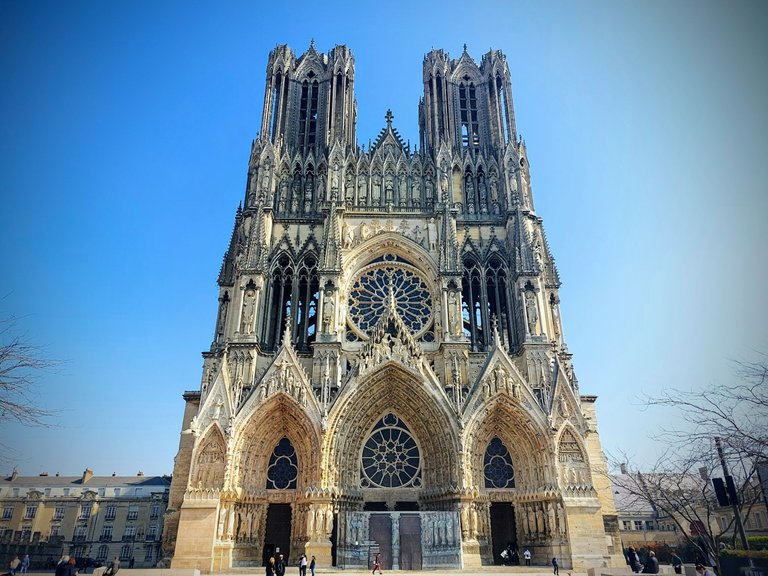
The Cathedral of Sainte Marie-Majeure, often referred to as just "La Major" by the locals, is one of the largest churches in France and the only cathedral built in the 19th century. In fact it is the only cathedral to have been built in the country in the last 200 years.
With a length of 146 meters and peak height 70 meters, it's dimensions are similar to St. Peter's Basilica in Rome. It's actually large enough to accommodate up to 3000 people.

The cathedral is located near the water at the new commercial port between the old port of Marseille and the Le Panier district. It was built to represent the power of the city and is the first thing that ships see when coming to Marseille. No doubt it leaves a lasting impression on those who witness its marvel from the water.

The first stone of the church was laid by Napoléon Bonaparte in 1852 under the direction of Léon Vaudoyer, the lead architect and designer of the structure. After his death in 1872 the project was taken over by a student of Vaudoyer by the name of Jacques Henri Espérandieu. Until his death in 1874 he was in charge of the framework and construction of the domes.

Architect Henri Antoine Révoil was in charge of the interior decoration, which consists of an elaborate work of mosaics, bronze and sculptured artwork.

Construction of La Major was completed in 1893, only 40 years after it first began.
Architecture
The architectural style of the structure is a combination between Romanesque and Byzantine Revival. It uses a variety of different material in its design and construction as well.

The exterior is made up of a combination of white stone from Cassis France and Cararra Italy as well as green limestone from the city of Florence.

The alternating pattern of dark and light creates a distinctive look and overall makes the building look more detailed and more intricate.

Though the design of the church is quite sound, the building has experienced an accelerating deterioration over the years that is based on three main factors. The first is due to it's close proximity to a harsh marine climate. The second is due to the porous and fragile nature of some of the materials used in its construction (mainly the limestone and lead roof); and the third is based on a design that doesn't allow easy access for general maintenance purposes. These factors have unfortunately led to a leaking roof, among other things.

The interior is built using a variety of stone work. There is onyx from Tunisia and Italy and mosaics brought in from Venice. Like the exterior facade, the interior walls are made up of an alternating pattern of stone work, this time of red and white marble.

The Neo-Byzantine architecture style is characterized by round arches, vaults and domes, all of which are prevalent and easily recognized in the La Major.

It also uses symbolic sculptures and ornamentation, brick and stucco surfaces, and the use of decorative mosaics.

The Romanesque architecture style, which the cathedral is also based on, is known for its thick and sturdy walls, round arches, large pillars and towers and its decorative arcading.

It is also characterized by a symmetrical layout and a simplicity of design. The significance of this is that it makes La Major one of the more unique cathedrals to see in France, since most churches in the country are built in the intricate and ornate Gothic style of architecture.


The Cathedral of Sainte Marie-Majeure is one of the largest churches in France and was built as a symbol of power within the city. It truly is a marvel of Marseille.


